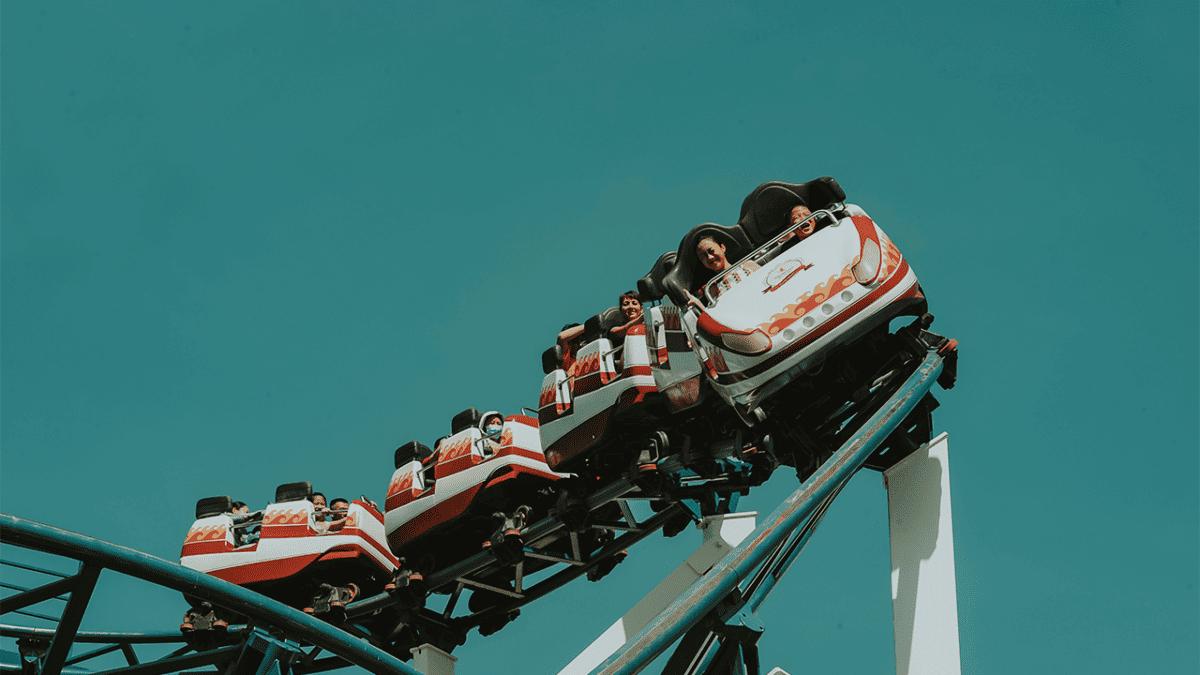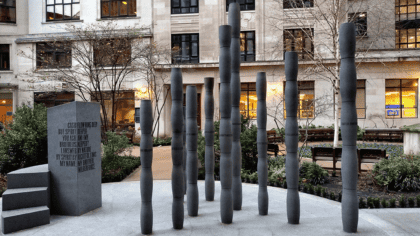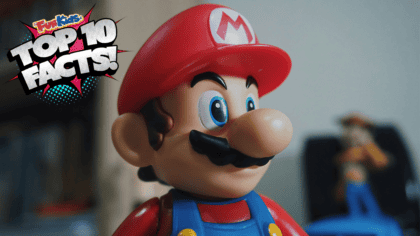Welcome to Engineer Academy where we’re exploring an A to Z of Engineering – everything from acoustics to zoos.
In each episode, we spin the wheel to find out what type of engineering we’ll be exploring with the help of Engers, our engineering expert.
You can listen to the full series of the A to Z of Engineering here.
Let’s take a look at Rollercoaster Engineering.
Did you know there are over 200 roller coasters in the UK – the tallest being The Big One at Blackpool Pleasure Beach. And at 64.9 metres, it certainly lives up to its name. It’s also one of the fastest roller coasters – with a top speed of 74 mph, that’s faster than a car on the motorway!
Embed from Getty ImagesRollercoasters are BRILLIANT fun – or they are if you’re a thrill seeker! Maybe you’ve been on one at an amusement park or on holiday. The rides are full of magic and excitement. And it’s all thanks to – yes, you’ve guessed it, engineers who come up with ideas for new rides, design and build them, and then keep them working safely.
Rollercoaster engineering is a type of mechanical engineering. These are experts who are all about mechanical systems – from cars and robots to drones and of course, rollercoasters! So how do you go about landing a job that’ll lead you to a theme park?
Embed from Getty ImagesIt all starts with a qualification – namely a degree in mechanical engineering. As well as learning the basics of engineering, physics, maths and design, it’s also important to be a creative person. After all, coming up with solutions to engineering problems or ways to make something like a rollercoaster super exciting, takes a bit of thinking outside the box.
So how is a rollercoaster designed and built? The first part of the process is to decide what kind of ride to build. You’ve got the ever-popular rollercoaster which carries you in a car on a track up, down and around. Then there are rides are known as dark coasters.
These are roller coasters that have heavily themed layouts and lots of special effects like animated characters, fire, smoke, and sound and light effects. Often these rides combine elements in the dark with more traditional roller coaster-style elements, with heavily banked and sharp turns, steep drops and spirals.
Another type are drop towers. These are death defying rides where you’re raised up high before plunging towards the ground. And then there are haunted houses, pendulum swings – almost anything to give you the thrill of a lifetime.
Embed from Getty ImagesAnd it’s not just for adults – engineers will design special rides for younger children. These may feature electric cars or small carriages which lift off the ground in what’s called an arial roundabout.
Deciding what to build depends on several factors. The park may want to attract more thrill seekers or entertain younger guests – or a mix of the two. Where in the park the ride will go will also be a factor. If there’s a great view of the countryside, it might be better to have a ride where people can see it rather than an indoor attraction. And as you can imagine, a rollercoaster needs a lot of space.
Once the designs are finalised, engineers can start to build. Often, all the metal work, structures and cars will be built off-site, and engineers will assemble all the parts together at the park – like a giant set of Meccano.
Embed from Getty ImagesOnce assembled, the engineers work isn’t finished. Thorough testing is needed before the first guest can get on board – and ongoing maintenance is absolutely crucial to ensure the rides stay safe. Every attraction is rigorously inspected and tested every day, with any remedial work undertaken.
Every now and then, each ride will be shut for a while so that careful inspections can take place, sometimes with the ride completely dismantled and rebuilt to make sure there are no mechanical faults. It might be a bit disappointing if you were hoping to take a ride, but safety comes first.
Embed from Getty ImagesTheme Park engineers are needed for all sorts of things – not just to maintain the rides. To keep guests safe, it’s important to have queuing systems to ensure there aren’t too many people on any ride, and to have barriers to keep people away from the tracks and other moving parts. Even the queues to get into the theme park will be designed to prevent crushes and ensure the entrances and public areas – from the cafes to gift shops, are accessible for everyone.
Embed from Getty ImagesAnd that’s our take on the letter R for ROLLERCOASTER! It’s been riveting.
Maybe in the future we will use rollercoasters instead of buses and trains to get around our towns – how cool would that be?
If you would like to check out some other types of engineering, why not check out Radar, Radiation, Radio, Refrigeration, Road or even Robotics engineering.
Join us again next time to spin the wheel and explore another letter in the A to Z of Engineering!
Engineer Academy: A to Z of Engineering.
Created with support from a Royal Academy of Engineering Ingenious Grant.
Add a commentA to Z of Engineering
Engineering is all around us! We’re exploring an A to Z of everything engineering from acoustics to zoos.
More From A to Z of Engineering






